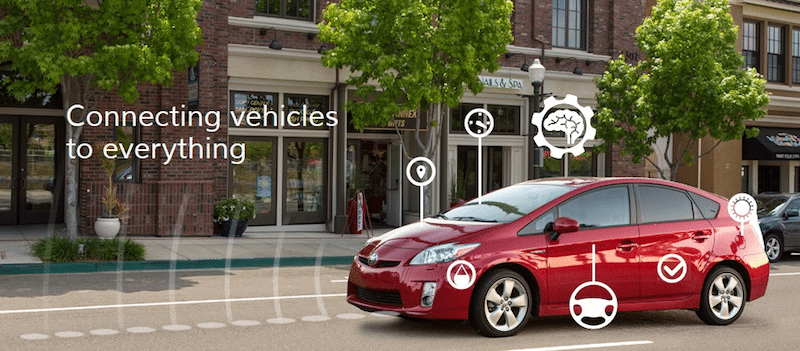The capabilities of modern vehicles have been shaped largely by the introduction of new software-based functions, often geared toward improved safety, efficiency and convenience. Many of these technologies fall under the umbrella terms ‘advanced driver assistance systems (ADAS)’ and ‘connectivity’.
Among other technologies, vehicle-to-everything (V2X) communication technology has received particular support in recent years, with suppliers, automakers, network operators and government agencies showing keen interest. 5G – the next step up from 3G and 4G – appears to be the ideal complement to V2X, enabling more data to be processed, and faster.
In practice, it makes for an attractive pairing. For example, consider the typical protocol of an autonomous driving system: perceive surroundings, think, and then act. V2X technology that leverages a 5G service could ensure that such actions are based on a wealth of real-time updates on the wider environment, and not only on what the car can see.
The next step
V2X is often compared to dedicated short-range communications (DSRC) technology, which provides a similar service based on Wi-Fi. DSRC-capable vehicles emit anonymous vehicle data that can be picked up by other nearby vehicles, including speed and location. V2X is generally considered to be a more advanced solution, and allows vehicles to communicate with each other, along with everything else around it that is connected: roadside infrastructure, pedestrians and other connected devices. The idea is that V2X will work alongside ADAS and provide context on the vehicle’s surrounding environment; the technology can pre-warn emergency braking systems, for example, as the vehicle approaches a busy crossing.

“V2X complements the capabilities of other sensors in the car, providing 360 degree non-line-of-sight coverage,” said Riccardo Calabrò, Director of Product Marketing, Qualcomm Communications, during a recent Automotive World webinar. Some variants of V2X leverage the 802.11p wireless communications system, while others utilise cellular technology designed for high-speed mobile applications. The latter is known as cellular vehicle-to-everything (C-V2X) communication, and according to Calabrò, has roughly double the range of 802.11p sensing.
Physical testing of C-V2X technology is gaining momentum, and on a global stage. In July, Qualcomm, Audi, Ericsson and other partners held a live C-V2X demonstration in Ingolstadt, Germany. Common situations where cars, motorcycles and roadside infrastructure could communicate were investigated. Similar trials have taken place in California, France and Japan. “We can see there is a very high interest to bring C-V2X to the road,” said Calabrò, with various segments keen to “take advantage of its benefits,” he added.
Connectivity in the fast lane
One technology that could dramatically improve the capabilities of a C-V2X system is 5G. In coming years, vehicles will become ever more reliant on real-time data as autonomous functions creep into new platforms. Then there are the various connected functions, such as AI assistants, streaming services and C-V2X. In essence, 5G will enable connected and autonomous vehicles to share more of this data, at greater speeds, and in more formats.
The driving experience should ultimately become more predictable, both for the in-vehicle computer and for the driver, explained Calabrò: “Cars will make safer manoeuvres through the provision of real-time information. Exchanging this sensor data in a timely manner between all vehicles will be a key role in enabling more predictable and coordinated driving, eventually leading to safer and more efficient traffic flow.” For example, path planning – the exact route an autonomous car intends to travel on the road – can be shared with other capable vehicles to paint a clear picture of its intentions.

Outside of V2X applications, various 5G trials have taken place recently. In the build up to the 2017 Indy 500 motor race, a test car was driven via a virtual reality (VR) headset that was linked to a live stream from a roof-mounted camera. The aim was to demonstrate the ‘real time’ experience of 5G. In the UK, a handful of emergency services are also testing 5G technology, with the potential to hold remote video consultations with patients. A number of commercial launches for 5G mobile applications are due in 2019, with automotive launches following from around 2021, advised Calabrò. “5G will be a key enabler for our automotive vision,” he added.
Tipping point
The collective ecosystem that comprises various automotive players, network operators and service providers are keen to deploy 5G and V2X functions in the near future. However, questions remain as to whether the benefits will be felt immediately. The issue is that V2X requires other vehicles and infrastructure to communicate with, and thus there will be little benefit in deploying the technology in limited applications. A similar dilemma faces driverless vehicles, which will have to mix with manually driven vehicles for years, if not decades.
“The more cars that are involved, the greater the impact will be,” agreed Calabrò, noting that as with any new technology, there will be a delay before the full benefits are felt. “The ramp up will take a while, but there will be a substantial number of cars that support C-V2X in the near future… The specific percentage is hard to say; it will depend on the evolution of different markets and regions, but a higher number of V2X capable cars are due to enter the market in coming years, eventually using 5G.”
